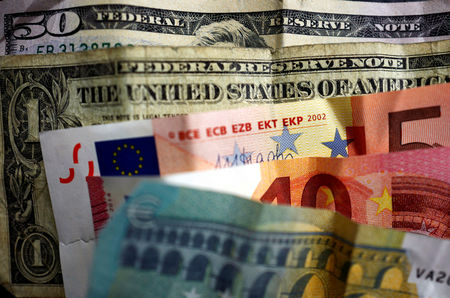
By Simon Jessop
LONDON (Reuters) – A turbulent year for sustainable finance is set to continue in 2025 as the return of Donald Trump as U.S. president heralds more regional divergence on everything from fund flows to legal cases and market regulations.
Despite record high temperatures and more extreme weather events across the planet last year, the policy response by governments still remains too slow to meet the world’s near 10-year-old goal of limiting global warming.
While regulators everywhere are gradually toughening up the rules that govern finance and companies in the real economy in an effort to cut climate-damaging carbon emissions faster, the pace of change is uneven with the U.S. already lagging Europe.
A turbo-charged U.S. political backlash over environmental, social and governance-related (ESG) policies under Trump means that gap could widen even if, in many cases, the economics, companies’ near-term emissions reduction pledges and the rising costs of climate events keep the broad direction unchanged.
“We anticipate that in 2025, we’ll see a resilience for sustainable investment globally, although it’s likely that there will remain core differences between the U.S. and Europe’s approach,” said Tom Willman, Regulatory Lead at sustainability tech firm Clarity AI.
“In the U.S., we can expect a more conservative approach, with investors prioritising long-term risk-adjusted returns to avoid potential political or reputational risks.”
While just over half of U.S. executives expect new or expanded sustainability regulations this year, in Britain that figure is 60% and Singapore 80%, a December survey of 1,600 executives by Workiva (NYSE:WK) showed.
The U.S. political reality has already spurred some U.S. firms to curtail their climate and diversity efforts to avoid censure. In the latest sign of corporates changing tack, the biggest U.S. banks recently left a sector coalition aimed at cutting emissions.
Legal pressure is also building on the world’s climate efforts. One in five climate litigation cases were not aligned with policies to reduce emissions, analysis last year by the Grantham Research Institute on Climate Change and the Environment showed. The majority of these were in the United States.
The regional split was evident among sustainable investment in the year to the end of September, with U.S. funds seeing clients withdraw a combined $15.9 billion as European funds took in $37.3 billion, data from industry tracker Morningstar showed.
The number of new ESG-focused funds launched in the United States, meanwhile, fell to just 7 against 189 in Europe.
Across the world, more sustainable funds were closed than launched for the first time, hit by the U.S. backlash, increasingly tough European Union rules aimed at forcing funds to evidence their sustainability credentials and market consolidation.
Demand for sustainable funds lagged the broader market in part because of mixed performance, concerns around whether some funds were as green as they purported to be, regulatory uncertainty and the ESG backlash, said Hortense Bioy, Head of Sustainable Investing Research, Morningstar Sustainalytics.
Despite an uncertain outlook given the potential for Trump to water down some ESG initiatives, for example government support for electric vehicles, many of the underlying market drivers of demand for sustainable finance, such as the need for green energy, remained, she added.
Charles French, co-chief investment officer at Impax Asset Management, said despite Trump’s negative view on climate change – he has called it a hoax – companies in sectors from healthcare and industrials were eyeing climate tech solutions to cut costs.
“The era of tech-inspired transformation is not coming to an end. In many areas, it’s just getting started,” he said.
The amount of money raised through sustainable bonds also continued to rise in the Americas, up 16.9%, and Europe, up 10.7%, in 2024, data from LSEG showed.

Given the competing pressures, Leon Kamhi, head of responsibility at asset manager Federated Hermes (NYSE:FHI), said he expected investors to “mature” and focus on the impacts being achieved in the real economy.
“For the transition to be successful, it is essential that such investments yield economic returns for both companies and investors alike.”
This post is originally published on INVESTING.





